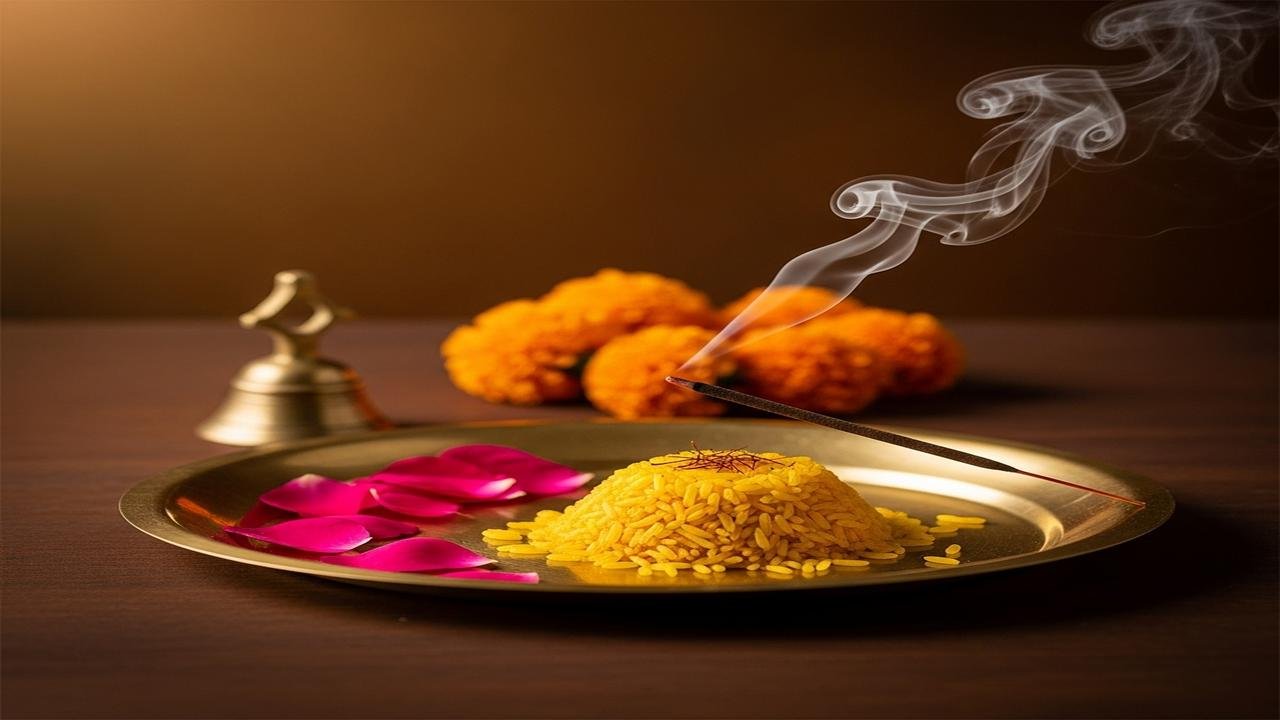Prasad: Why Food Offered To A Deity Is Sacred

What is prasad?
Prasad — literally “grace” or “a gracious gift” — most commonly refers to food or other objects that have been formally offered to a deity and then returned to devotees as sanctified. The offering itself is called naivedya — food placed before the image or icon — and once the deity is said to have accepted the offering through ritual, the item becomes prasad. Beyond food, flowers, sacred ash, or a token object given by a priest or temple can also be called prasad.
Why is prasad considered sacred?
The sanctity of prasad rests on two linked assumptions that recur across Hindu traditions:
- The presence or acceptance of the divine: When an offering is made with ritual words, mantras, or gestures, the deity is understood to accept it. That acceptance is often described as the deity’s gaze, blessing, or touch, and it transforms ordinary material into something charged with divine favour.
- The relational meaning of grace: Prasad is not merely transformed matter; it is a token of the deity’s benevolence. Receiving and consuming prasad is received by devotees as an encounter with the divine — not merely symbolically but as an intimating of blessing.
Scriptural and exegetical roots
Scriptures and commentators provide language that supports these ideas. For instance, Bhagavad Gītā 9.26 (“patram pushpam phalam…” — “a leaf, a flower, a fruit… offered with devotion”) is frequently cited to show that a simple offering accepted by God becomes sacred through devotion. Vaishnava interpreters like the followers of Ramanuja stress God’s personal acceptance — the deity truly partakes and returns grace. Advaita commentators such as Shankara, while emphasizing non-dual knowledge, still accept the devotional efficacy of offerings as soteriologically useful for many aspirants.
In Puranic narratives and temple histories — whether in Vaishnava, Shaiva, or Shakta contexts — gods and goddesses are portrayed as beneficiaries who, by accepting offerings, confer protection and blessing on devotees. These accounts shape the living sense that prasad carries presence and favour.
How prasad becomes prasad: common ritual steps
- Preparation and offering: Food is prepared with sanitary care and devotional attention; this is the naivedya.
- Consecration: A priest or officiant recites mantras, waves lamps (arati), or performs ritual gestures; in some cults the deity is ceremonially “fed” or receives a symbolic portion.
- Darshan and distribution: After the offering, devotees take darshan — the sight of the deity — and receive prasad, often from a plate or central collection point. The moment of distribution is the moment of grace.
Different traditions place emphasis on different elements: in many Shaiva contexts the sanctified object may include vibhuti (sacred ash) or bilva leaves; Shakta shrines may consecrate specific sweets or ritual tokens; large temple kitchens like those historically attached to Jagannath or Tirupati follow elaborate rules so that the prasada itself is treated as ritually pure.
Social, devotional and psychological functions
- Community and equality: Sharing prasad turns religious practice into a communal act. In many temples the same food is distributed to all, which can reinforce egalitarian ideals — everyone eats the deity’s gift.
- Devotional intimacy: Consuming prasad is often described as internalising the deity’s blessing. For a bhakta (devotee), the act of eating is a concrete, accessible way to receive grace.
- Ethical reminder: The cycle of giving — devotee offers, deity accepts, devotee receives — models reciprocity and humility; offerings are often linked to vows, charity, and feeding the poor (annadanam).
Variations across traditions
There is wide diversity in how prasad is understood and practiced. In Vaishnava temples (e.g., Krishna or Rama worship), prasad is often strongly identified with the deity’s personal taste and presence. In Shaiva practice one may receive consecrated ash or bilva leaves as a sacred sign. Shakta shrines may treat certain plant or animal offerings differently depending on local custom. Smarta households may treat prasada as part of daily family worship. Temple rules, caste customs, regional foods and seasonal festivals all shape what is offered and how it is distributed.
Common etiquettes and practical notes
- Receive prasad respectfully — with both hands or with a gesture of humility — and offer a quiet prayer or thanks.
- Prasad is usually meant to be eaten shortly after receiving; keeping it for long or reselling it is generally discouraged.
- Hygiene matters: temples and priests increasingly follow sanitary norms when preparing food; devotees should also be mindful of allergies and food restrictions.
Note: If someone is following strict fasting or medical diets, they should take appropriate care; ritual expectations should not override personal health requirements.
Why the distinction from “leftovers” matters
One persistent misunderstanding is that prasad is merely leftover food. Most traditions explicitly reject this idea: prasad is intentionally offered, ritually consecrated and then returned. Its value comes from that ritual investment and the relationship it embodies. Whether conceived metaphysically as a real presence or symbolically as a sign of grace, prasad expresses the idea that the sacred can touch everyday life.
Conclusion
Prasad matters because it links ritual action, theology and community. It turns a simple meal into an encounter with the divine, and a communal gesture into an ethical and devotional practice. Across regions and sects the details vary, but the core remains: an offered thing, ritually accepted, becomes a vehicle of blessing that binds the devotee to the deity and to other human beings.
